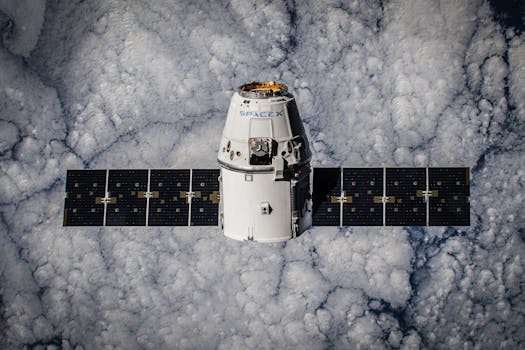
The Future of Satellites: Revolutionizing Global Communication and Exploration
The future of satellites is poised to revolutionize global communication and exploration, with advancements in technology and innovation paving the way for a new era in space-based services. The focus keyword Future of satellites is an exciting and rapidly evolving field, with new developments and discoveries being made regularly. In this article, we will explore the current state of satellite technology and what the future holds for this industry.
Current State of Satellite Technology

Satellites have been a crucial part of modern communication and exploration for decades, providing a wide range of services including telecommunications, navigation, weather forecasting, and Earth observation. Today, there are over 5,000 satellites in orbit around the Earth, with many more planned for launch in the coming years. The current state of satellite technology is characterized by a shift towards smaller, more affordable, and more capable satellites, with a focus on constellations and mega-constellations.
One of the key trends in the satellite industry is the development of small satellites, also known as smallsats. These satellites are typically smaller and less expensive than traditional satellites, making them more accessible to a wider range of organizations and individuals. Small satellites have a wide range of applications, including Earth observation, communication, and scientific research. For example, the Planet Labs constellation of small satellites provides high-resolution images of the Earth, while the OneWeb constellation aims to provide global internet connectivity.
Advancements in Satellite Technology

There are several advancements in satellite technology that are expected to shape the future of the industry. One of the most significant developments is the use of reusable rockets, which has significantly reduced the cost of launching satellites into space. Companies such as SpaceX and Blue Origin are leading the way in reusable rocket technology, with a focus on launch vehicles that can be used multiple times. This has made it possible for satellites to be launched at a lower cost, making space-based services more accessible to a wider range of organizations and individuals.
Another key advancement in satellite technology is the development of advanced propulsion systems. Traditional satellites use chemical propulsion systems, which are heavy and inefficient. New propulsion systems, such as electric propulsion and ion engines, are being developed, which are more efficient and have a longer lifespan. These advanced propulsion systems will enable satellites to operate for longer periods of time, reducing the need for replacement and increasing the overall efficiency of space-based services.
Future of Satellites: Emerging Trends and Applications

The future of satellites is expected to be shaped by several emerging trends and applications. One of the most significant trends is the use of satellites for global communication. With the increasing demand for global connectivity, satellites are expected to play a key role in providing internet access to remote and underserved communities. Companies such as OneWeb and Amazon Kuiper Systems are developing constellations of satellites to provide global internet connectivity, with a focus on bridging the digital divide.
Another emerging trend in the satellite industry is the use of satellites for Earth observation. Satellites have long been used for Earth observation, but advancements in technology have made it possible to collect more detailed and accurate data than ever before. The use of satellites for Earth observation has a wide range of applications, including environmental monitoring, disaster response, and climate change research. For example, the European Space Agency’s Copernicus program provides high-resolution images of the Earth, which are used for a wide range of applications, including land monitoring, marine monitoring, and atmosphere monitoring.
Conclusion

In conclusion, the future of satellites is an exciting and rapidly evolving field, with new developments and discoveries being made regularly. The current state of satellite technology is characterized by a shift towards smaller, more affordable, and more capable satellites, with a focus on constellations and mega-constellations. Advancements in satellite technology, such as reusable rockets and advanced propulsion systems, are expected to shape the future of the industry. Emerging trends and applications, such as the use of satellites for global communication and Earth observation, will have a significant impact on the future of space-based services.
See more:






